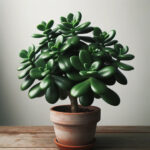Introduction to the Crassula Genus
Welcome to the succulent spotlight, where the unassuming yet charismatic Crassula genus takes center stage! With its remarkable diversity, Crassula has captivated gardeners and botanists alike, becoming a celebrated staple in the realm of succulent collections. But what is it about this particular genus that makes it a prized possession in windowsills and gardens across the globe? Let’s unravel the lush tapestry of these plump and picturesque plants.
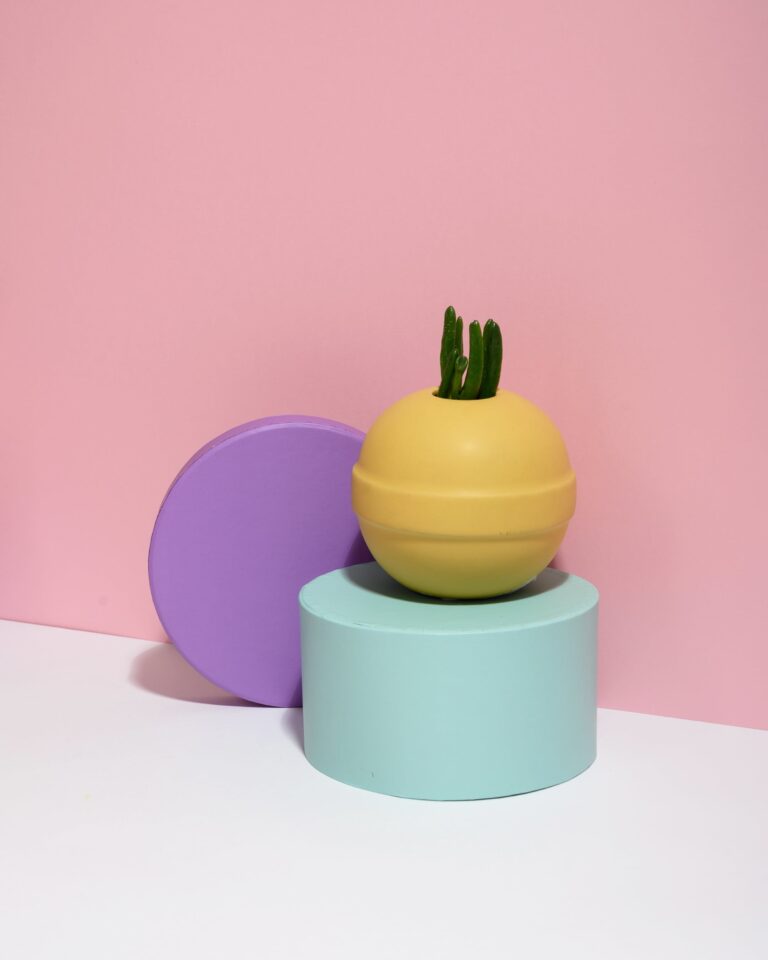
Originating from the dazzling landscapes of South Africa, Crassulas have traversed the world to find themselves basking under the tender care of green thumbs and enthusiasts. Known for their ease of cultivation and resilience, these succulents are as forgiving as they are beautiful, making them an excellent choice for both budding horticulturists and expert plant whisperers. Picture, if you will, a succulent oasis right in your living room, each Crassula variety emulating gemstones with their rich hues and mesmerizing forms.
Yet, beyond their striking visual appeal lies a versatility that is seldom matched. From the well-loved jade plant, Crassula ovata, to the intricately layered ‘Buddha’s Temple’, these succulents can morph from miniature marvels to bold architectural statements. Envision ‘Crassula arborescens’, with its silver-dusted leaves, bestowing a touch of lunar magic upon your urban sanctum, or the cascades of ‘Crassula pellucida variegata’, emulating a waterfall of variegated jewels in your hanging garden.
But let’s not rest on aesthetics alone; the practicality of Crassula plants is also worth noting. In today’s fast-paced world, a low-maintenance friend like a Crassula can be a real treasure, demanding little yet offering so much in return. For more insights into their upkeep, make sure to heed the wisdom of Crassula care experts who extol the virtues of these drought-tolerant and hardy performance plants.
While each type of Crassula embodies its own unique charm, they all share a common lineage that traces back to remote hills and quiet valleys where they’ve thrived for centuries. It’s no wonder then that these succulents have found their way into the hearts and homes of so many. They’re not just plants; they’re living artwork, a patchwork of nature’s grandeur accessible to anyone with a love for the leafy and the lovely.
Diverse Species of the Crassula Family
Imagine stepping into a succulent oasis, where each tiny plant holds a universe of its own, with unique features that echo the marvels of natural design. That’s the world of Crassula varieties, a diverse and enchanting genus within the succulent family that’s as versatile as it is visually appealing. So let’s dig in and discover the distinct species that make Crassula a favorite among green-thumbed enthusiasts and beginners alike.
Popular Crassula Species and Their Unique Characteristics
One of the most familiar faces in the Crassula genus is the ubiquitous Crassula ovata, commonly known as the Jade Plant. With its woody stems and plump, oval leaves that can take on a reddish tinge in sunlight, this plant is a staple in home collections. But the Jade Plant is just the beginning. As we explore the Crassula family, we encounter an array of species, each with its story to tell.
For instance, the Crassula arborescens, or the Silver Dollar Plant, flaunts silvery blue leaves that glint like coins under a full moon. Or consider the charming Crassula ‘Buddha’s Temple’, a variety that stacks its leaves in a meticulous geometric pattern that emulates a miniature pagoda. Then there’s the Crassula muscosa, weaving its tight, green labyrinths that invite you to ponder the intricacies of its design.
Crassula varieties offer not just visual delight but also resilience and adaptability, making them ideal for those seeking fuss-free green companions. Their ability to store water in their leaves and stems allows them to thrive even in the forgetful hands of a novice, as they patiently withstand periods of drought.
What truly sets Crassula apart, however, is not just their drought tolerance but their striking presence. With the right care, some species can bloom tiny star-shaped flowers, adding another layer of allure to their already charismatic demeanor. To see these plants in their full glory, one must simply provide ample lighting and minimal water—a cornerstone of succulent care you can easily master.
Whether you’re creating a tapestry of textures with various Crassula types or nurturing a single statement piece, these succulents are your canvases, ready to bring a touch of nature’s sculptural artistry into your living space.
The Iconic Crassula Ovata: Unveiling the Jade Plant
Take a stroll through the enchanting world of succulents, and you’ll likely encounter the esteemed Crassula ovata, or as many fondly know it, the Jade plant. Renowned for its glossy, spoon-shaped leaves and robust, tree-like stature, this perennial charmer is not just a plant – it’s a botanical superstar that effortlessly brings a touch of verdancy to windowsills and office desks around the globe. Here’s an in-depth look at the care it craves!
Picture the Jade plant, basking in the sun, as its fleshy leaves shimmer with a vibrant green hue, edged occasionally in an alluring red. It’s easy to see why the Crassula ovata reigns supreme in the succulent kingdom. But the fun doesn’t stop at the classic variety – dive deeper, and you’ll discover a treasure trove of varieties, each with its own unique flair. From the compact, ripple-leaved ‘Gollum’ to the striking, variegated ‘Tricolor’, there’s a Jade plant personality fit for every succulent enthusiast.
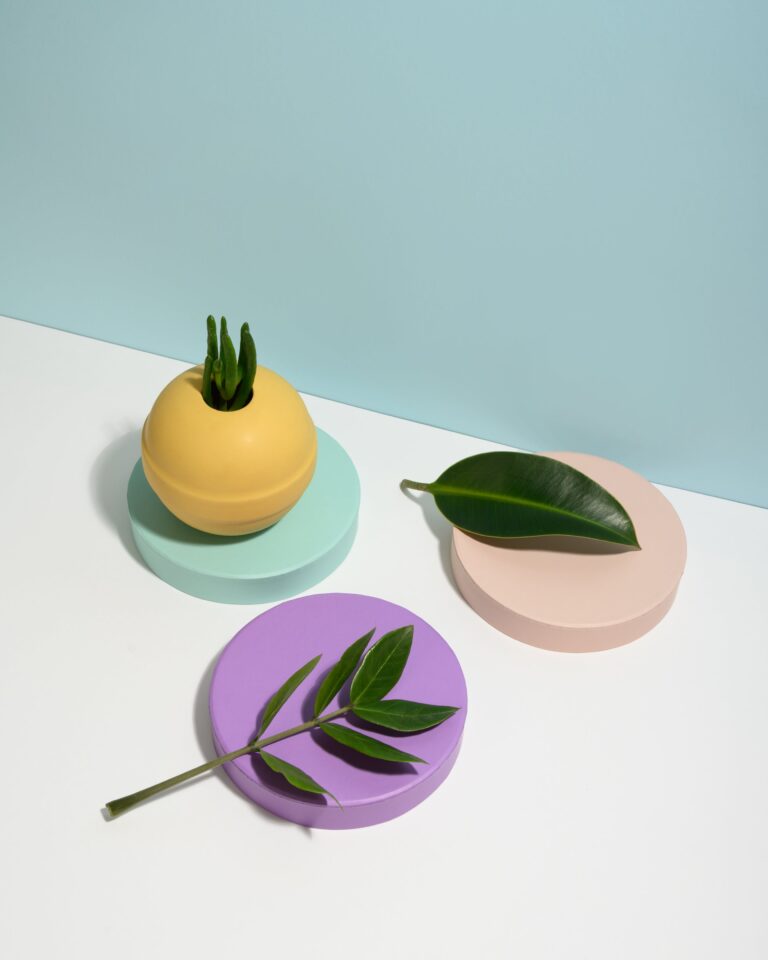
It’s not just their looks that have made the Jade plant a mainstay in flora collections; their resilience and adaptability are qualities for the horticultural hall of fame. Imagine a plant that not only forgives your occasional neglect but flourishes with just a smidge of care—welcome to the forgiving world of the Crassula ovata. Embodying the definition of low-maintenance, people often share anecdotes of Jades thriving on office shelves, forgotten corners of the home, and even making triumphant returns from the brink of plant oblivion.
And yet, the Crassula ovata stands as a symbol of growth and renewal in cultures around the globe, often passed down through generations like a living heirloom. From celebrating milestones like buying a new home to ushering in fortune and prosperity, the Jade plant is more than just a pretty face; it’s a storyteller and a witness to life’s ebb and flow.
Whether you’re a seasoned gardener or a budding green thumb, the Crassula ovata offers a guiding hand through the world of gardening. Its simplicity is its strength, and its diverse varieties offer a canvas for aspiring indoor gardeners to paint their green masterpiece. Let’s not forget, with a little patience and the right snips, these evergreens also present the exciting opportunity for propagation – turning one treasured plant into an entire forest of mini Jades to share and cherish.
Caring for Your Crassula: Tips and Tricks
When you bring a Crassula into your home, you’re not just adding a touch of greenery—you’re adopting an ancient symbol of prosperity. These succulents, with their diverse appearance, have a simple elegance that can turn any space into a serene succulent oasis. But don’t let their dainty looks deceive you; these plants are as hardy as they are beautiful. From the sun-soaked cliffs of Madagascar to your sunny kitchen windowsill, here’s how you can keep your Crassulas thriving.
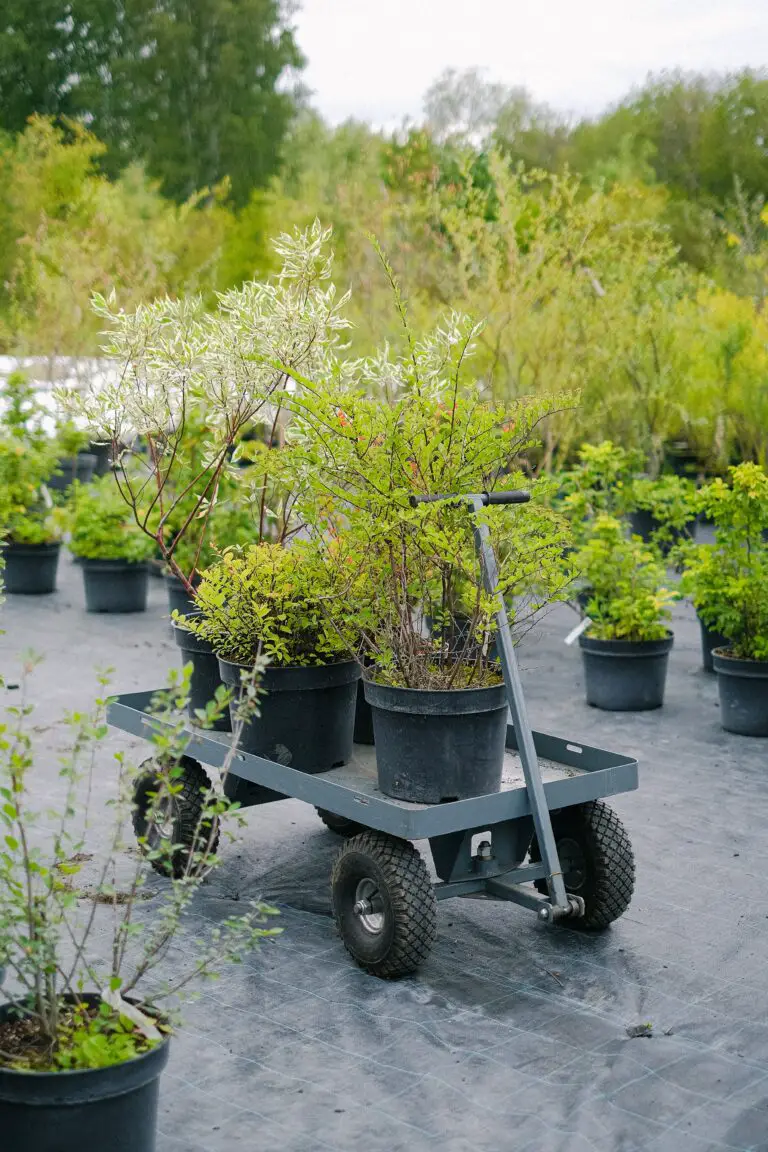
Light: The Life-giver
Crassulas bask in the glory of sunlight. Place them where they can soak in plenty of bright, indirect light. You might notice, during those leisurely weekend afternoons, how the leaves glow under the gentle rays—this is their happy place. Direct summer sun can be intense, like an overzealous hug, so a bit of shade can prevent sunburn. Shorter days in winter? Hold a spot for your Crassula on the sill; these adaptable fellows appreciate the limited sun.
Water: A Balancing Act
Imagine you’re a contestant on ‘The Great Plant Balancing Act,’ and your Crassula is the star. Too much water, and the roots will protest; too little, and the leaves wither in quiet disappointment. The winning strategy is simple: let the soil dry out completely before the next watering. Touch-test the topsoil—dry? It’s time for a drink. Remember, Crassulas store water in their leaves, so they’ll forgive you if you skip watering day now and then.
Soil: Foundation Matters
All Crassulas ask for is soil that doesn’t cling onto water like a needy friend. Fast-draining soil gives the roots room to breathe and spread out, away from the dangers of rot. Mixing in sand or perlite can transform your regular potting mix into a Crassula’s dream bed. If you’re potting a Crassula for the first time, or repotting an old friend, lean towards a commercial cactus mix. It’s like the perfect mattress—firm support with just enough give.
Temperature: Comfort is Key
Just as we reach out for a blanket when it’s chilly, or an iced tea on a scorching day, Crassulas have their comfort preferences. They enjoy a temperature range of 65-75°F (18-24°C)—just like a typical room. On those exceptionally hot days, they can handle the heat, but come winter, keep them clear from frosty windows to avoid turning a vibrant succulent into a popsicle. Your Crassula isn’t asking for a climate-controlled greenhouse, just a cozy corner away from the extremes.
Consider yourself the guardian of a little green treasure, one that asks for nothing more than light, the right sip of water, a comfy base, and a room with a view. Treat your Crassula with these simple courtesies, and watch as it turns your home into the succulent haven you both deserve.
Propagating Crassula Cuttings: A Step-by-Step Guide
Imagine transforming a single Crassula leaf into a mini succulent forest. Sound like a green thumb’s dream? It’s not just possible—it’s quite easy, and I’m about to walk you through the process. Let’s cultivate our very own succulent oasis by mastering the art of propagating Crassula cuttings.
Choosing the Right Cuttings
First things first: look for healthy, plump leaves or stems on your Crassula plant. These chaps are the prime candidates for propagation. A withered or discolored leaf might look like the underdog story of the century, but trust me, a healthy cutting increases your chances of success. Have a variety that’s thriving? That’s the one you want to replicate!
Prepping Your Propagation Station
Before we get to the dirty work, let’s talk setup. Clear a workspace and grab some well-draining soil—a mix for cacti or succulents works wonders. You’ll want a shallow tray or pot; something with drainage holes is non-negotiable. Now, moisten that soil slightly—you’re aiming for the consistency of a wrung-out sponge, not a mud wrestling pit.
Making Your Cut
Sharp tools only, folks—sanitize those scissors or shears with alcohol to avoid any microbe melodramas. For stem cuttings, snip at a 45-degree angle for maximum exposure. Leaves will snap off with a gentle twist—they should come away clean, like snapping a chocolate bar, not tearing a tissue.
Once you’ve obtained your cuttings, resist the temptation to plant immediately. Let the cut ends callous over for a few days, like a succulent scab. This step is crucial—it’s the plant’s natural band-aid, preventing rot and fungal infestations.
Planting Your Cuttings
When your cuttings have toughened up, it’s time to get them into the soil. Gently press stems into the earth, but for leaf cuttings, simply lay them on top; Mother Nature doesn’t bury them, and neither should you. Now, channel your inner patience guru, because it’s a waiting game. Keep the soil lightly moist, avoiding a flood that would make Noah nervous.
To give you a visual idea of the process, check out this instructional video:
The Waiting Game: Patience Pays Off
You might be watching like a kettle, waiting for it to boil, but root growth takes time. In a few weeks, tiny roots will emerge, tentatively exploring their new home. When these roots have established themselves, that’s when you can up the ante with watering, transitioning from a spritzing sprite to a more generous moisture benefactor.
Transplanting to Their Permanent Quarters
As your baby Crassulas begin to outgrow their nursery, you’ll want to transplant them to a spacious abode. A gentle touch is key during this rite of passage—you wouldn’t rush a snail, would you? Give them a room with a view (plenty of indirect light) and a touch more soil to root into. In time, you’ll see them flourish and multiply, all from a single leaf or stem you wisely chose to propagate.
Remember, each Crassula you nurture from cuttings is a story of growth and resilience. You’re not just growing plants; you’re cultivating life in miniature, one succulent at a time. Happy propagating!
Designing with Crassulas: Landscape and Indoor Ideas
When you hear ‘Crassula,’ do you just think of the classic Jade Plant? Think again! Crassulas come in an array of shapes, textures, and hues that can transform any space into a succulent sanctuary. Let’s talk about weaving the magic of Crassula varieties into your home and garden designs.
Creating a Tapestry of Texture in Gardens
Imagine a garden that captivates with every glance. By planting a mixture of Crassula species, you can achieve a living tapestry that’s not only beautiful but also drought-resistant. Combine the robust, tree-like structure of Crassula ovata with the delicate, cascading tendrils of Crassula pellucida ‘Variegata’ for a study in contrasts. Align them in modern, geometric planting beds or let them spill over rugged rocks for a naturalistic feel.
Jazzing Up Indoor Spaces with Crassula Accents
Indoors, Crassulas continue to impress. No bigger than a teacup, the Crassula ‘Buddha’s Temple’ can command attention on a windowsill. Wondering about that empty corner in your room? A tall Crassula ovata can transform it into an area of intrigue. A potted arrangement of mixed Crassulas on a coffee table makes for a lively centerpiece, encouraging conversation and admiration.
Did you know that with some creativity, a simple Crassula can become an eye-catching bonsai? Watch this video for inspiration on turning your Jade plant into a mini architectural marvel.
Unleashing Color with Crassulas
Color is key in making a visual impact. With Crassulas, you’re spoiled for choice. The ‘Bluebird’ variety adds a splash of cool blues to a warm palette of garden greens. Combine it with the vibrant Crassula capitella ‘Campfire’ for a fiery contrast that smolders all year. Indoors, a strategically placed Crassula that catches the light can ignite a whole room with its colors.
Living Sculptures: Bringing Art to Life
Crassulas aren’t just plants; they’re potential sculptures. Their geometric growth patterns make them ideal for adding structure to your indoor and outdoor design schemes. Staggering Crassulas in varying sizes can create a living sculpture display fit for any avant-garde gallery or plush office atrium. Don’t just plant them – position them to play with light, shadow, and perspective.
Wherever you decide to introduce Crassulas, know that they’re more than just drought-tolerant delights. They’re versatile, vivacious varietals capable of elevating design to sublime new heights. Embrace the wide range of Crassula types and let your green thumb craft captivating spaces that resonate with life and creativity.
Common Pests and Problems in Crassula Cultivation
Transforming your living space into a succulent sanctuary with varieties of Crassula can be incredibly rewarding. But sometimes, uninvited guests can turn your green paradise into a war zone. Think of those tiny but mighty pests as the ninjas of the plant world, lurking in the shadows, ready to strike your unsuspecting Crassulas. Don’t fret! With a bit of know-how and some detective work, you can crack the case of the sneaky sap-suckers and protect your succulent oasis.
The Usual Suspects: Identifying Common Crassula Culprits
So, who are these stealthy invaders? Keep an eye out for aphids, those little green goons that cluster on new growth and leaves, siphoning the life out of your Crassula. Then there are mealybugs, the white, fluffy felons who set up camp in leaf crevices and stem joints, feasting on plant juices. Spider mites, the tiny web-weavers, can also appear seemingly out of thin air, spinning fine silk over your plant while they munch away. And let’s not forget about scale insects; these armored adversaries attach themselves firmly to stems and undersides of leaves, acting as persistent parasites on your poor Crassula.
Cracking Down on Infestations
When you discover these pesky pests, it’s time to launch a counterattack. Imagine suiting up and getting ready for an epic showdown — except instead of armor and swords, you’re armed with insecticidal soap and a strong stream of water. A regular spray-down can dislodge those audacious aphids and mites, sending them on a one-way flight off your Crassula. For more stubborn squatters like scale and mealybugs, you might have to get up close and personal, picking them off or dabbing them with alcohol-soaked cotton swabs.
Fortifying Your Foliage: Proactive Prevention
Prevention is the secret weapon in your Crassula care arsenal. It’s easier to repel invaders than to evict them. Keep your succulents strong by providing the right lighting, watering appropriately, and ensuring good air circulation — just like setting up a security system for your plant babies. Regular inspections are a must, so make it part of your routine to check under leaves and around stems. Think of it as routine surveillance on your leafy district. With alertness and appropriate care, your Crassula can thrive and fend off most of these botanical burglars naturally.
Ultimately, a little bit of vigilance goes a long way in keeping your Crassula varieties healthy and happy. By understanding and recognizing common pests, dealing with them effectively, and preventing their return, your succulent oasis will continue to flourish and bring you the tranquil beauty you deserve. Just remember, every Crassula guardian must sometimes don the cap of a green-thumbed detective to ensure their plants thrive.
The Collector’s Corner: Rare and Unusual Crassulas
An intriguing look into some of the less common and sought-after Crassula varieties prized by collectors.
Imagine strolling through the alleys of a bustling plant market and you spot it – an unusual Crassula with a texture or hue you’ve never seen before. It’s more than just a plant; it’s a living sculpture, a piece of natural art that’s both alluring and rare. Collectors and enthusiasts around the globe are always on the hunt for these coveted specimens. These Crassula varieties are more than just conversation starters – they encapsulate the diversity and adaptability of Mother Nature’s design.
The beauty of these collector’s items doesn’t simply lie in their rarity – it’s also their resilience that captivates. Take the Crassula umbella, for instance, which folds its leaves upward like an umbrella – a peculiar sight in the succulent world. Or the Crassula ‘Buddha’s Temple’, a meticulous stack of leaves that mimic the tiers of a miniature pagoda. These extraordinary forms challenge the conventions of the typical rounded succulent aesthetic and entice collectors to delve deeper into the genus.
For those who are lucky enough to encounter them, rare Crassulas like the Crassula mesembryanthopsis – affectionately known as ‘mesembs’ by enthusiasts – are unique jewels. Their leaves can resemble anything from a cluster of opalescent beads to emerald gemstones, thriving in the cracks and crevices of rocks. Hosting a ‘mesemb’ in your collection could be akin to keeping a piece of the starry night sky within your living quarters.
Finding a rare variety isn’t just a stroke of luck; it’s the culmination of keen dedication. Envision a collector who nurtures their Crassula ‘Moonglow’ from a single leaf cutting to a stunning display of overlapping silvery discs. It’s not just growth – it’s a journey shared between plant and gardener. And what about the Crassula pellucida variegata? It dazzles with its translucent leaf tips and patterning that turns heads and ignites conversations among succulent aficionados.
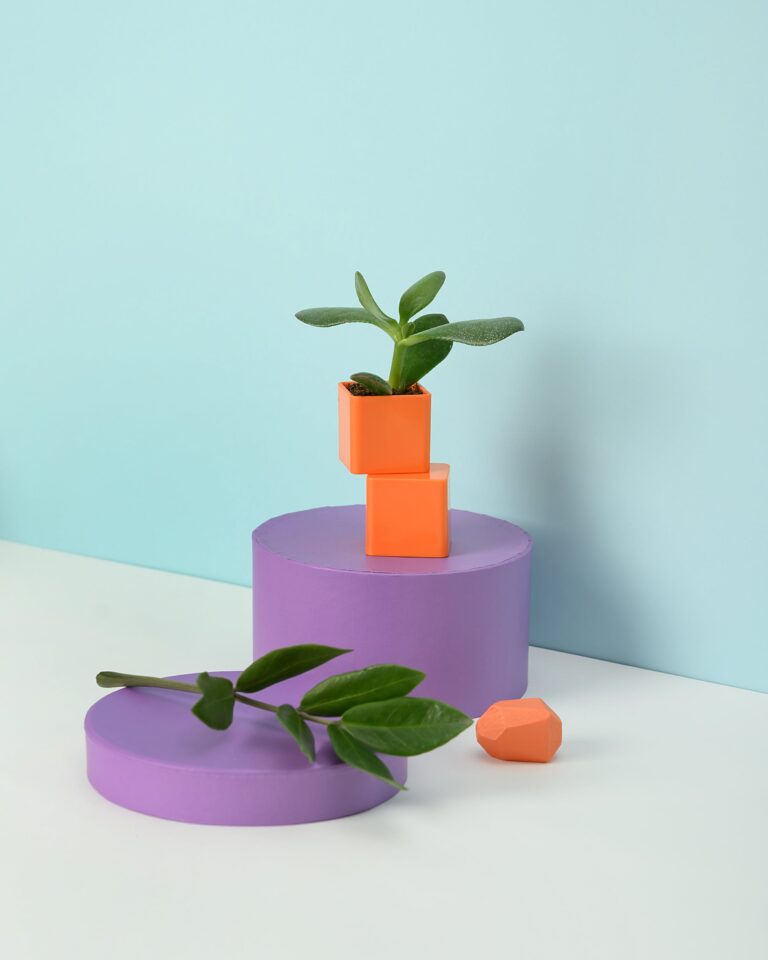
As a lover of Crassulas, crafting your own succulent oasis goes beyond the boundaries of simple horticulture. It’s about creating a microcosm of natural oddities and plant rarities that represent the uniqueness of the plant kingdom. It’s not just about growing – it’s about cultivating an experience that connects you to the earth and to the vast universe of Crassula types that most people would never know existed. In this collector’s corner, every plant tells a story, and every leaf is a part of a growing legacy that you’re helping to preserve.
Conservation Efforts for Wild Crassula Habitats
The world of Crassula varieties extends far beyond the potted jade plants adorning our windowsills. In the undisturbed corners of arid landscapes, these resilient succulents thrive, painting the terrain with a diverse palette of green. Yet, this botanical richness is under threat, and conservation efforts have become paramount in protecting the Crassula’s wild grace.
Imagine, if you will, a stretch of South African veld, home to a plethora of Crassula species. Here, amidst the rocky outcrops, species like Crassula ovata and Crassula arborescens weather the storms and droughts with stoic endurance. However, the encroachment of human development, coupled with the illegal trade in wild plants, casts a long shadow over these resilient ecosystems.
Thankfully, the story doesn’t end there – a narrative of decline is being met with active resistance. Conservationists are rallying, implementing initiatives aimed at preserving the ecological niches where these succulents flourish. Through habitat restoration, sustainable cultivation practices, and stringent regulations on trade, they’re crafting a future where Crassula habitats are not just surviving, but thriving.
Real-life examples of such initiatives include community-driven projects that restore native vegetation, helping to buffer Crassula species against the edge of extinction. In many parts of the world, botanic gardens and conservation organizations are engaging in ex-situ conservation – creating living collections of Crassula as a hedge against habitat loss. It’s a global effort, from the coasts of the Cape to the rugged highlands of Madagascar, where biodiversity is celebrated and fiercely guarded.
For those who wish to witness the impact of these efforts and the resilience of the Crassula, here’s a video that illustrates just how marvelous and adaptive these succulents can be:
As we continue to explore the myriad crassula types, let’s bear in mind the importance of their preservation. Their very existence in the wild is a testament to nature’s resilience and ingenuity, and with consistent conservation efforts, we can ensure these verdant gems continue to enchant future generations in their natural oases.
Frequently Asked Questions (FAQs)
Got burning questions about crassula types? You’re not alone! These succulent beauties are popular conversation starters. Let’s leaf through some common FAQs that plant enthusiasts and green-thumbed gardeners often ponder.
What Makes Crassula Plants a Must-Have in My Garden?
Imagine walking into a serene sanctuary, where jade-like treasures create a lush haven. Crassula varieties, with their fleshy leaves and robust nature, bring that vision to life. Perfect for drought-prone areas, they’re a delightful addition to water-wise landscapes!
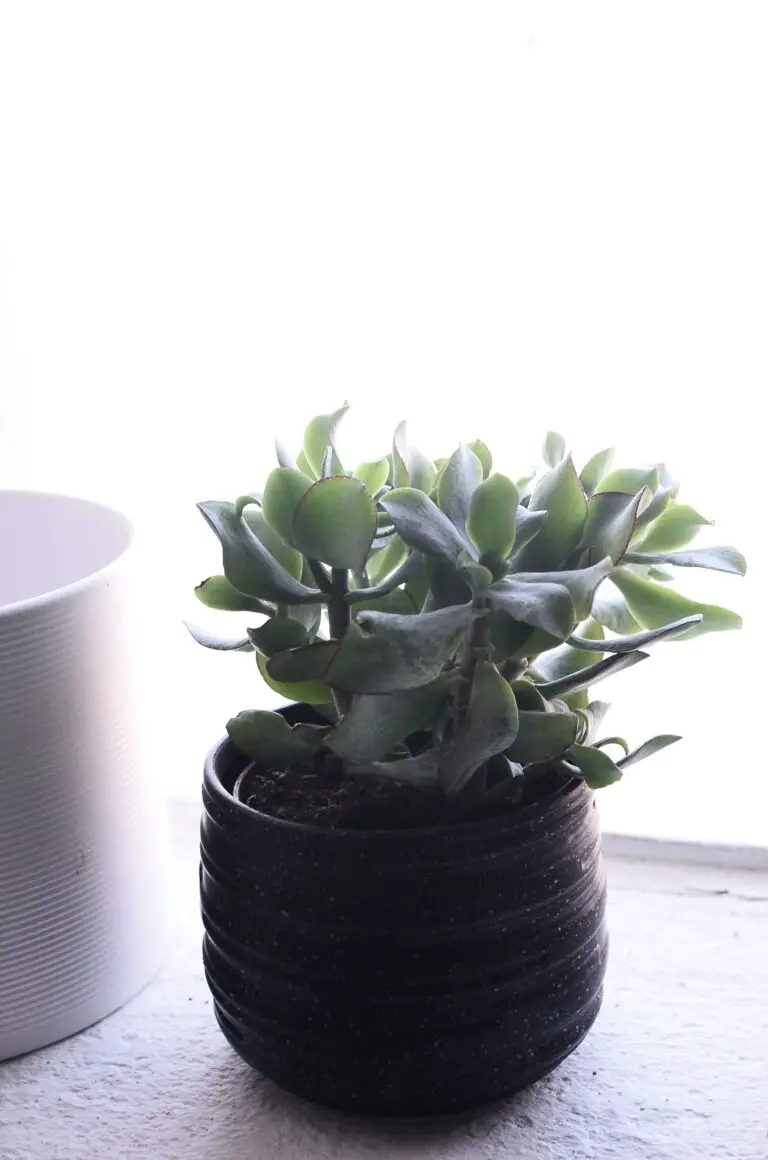
How Often Should I Water My Crassulas?
Picture this: a desert downpour quenching the soil, followed by weeks of sun-soaked bliss. Mimic nature by treating your Crassula to a thorough drink, and then let the soil dry out completely. Overwatering? It’s a no-go for these desert dwellers!
Do Crassula Varieties Need Special Soil?
They sure do! Think of it as creating the perfect bed for a king. A well-draining mix, much like a sandy royal mattress, allows excess water to escape, preventing the dreaded root rot that can besiege these succulent sovereigns.
Can Crassulas Survive in Low Light?
If you’ve ever found a patch of sunlight in a gloomy room and thought, “Ah-ha! That’s the spot!”—so do Crassulas. They adore the sun but can hold their own in lower light. Just don’t tuck them away in a dark corner. No one enjoys a gloomy dungeon, after all!
What Are the Signs of a Happy Crassula?
Your Crassula is like a friend that doesn’t need words to communicate. Bright, perky leaves that stand proud? It’s delighted! Shriveled, droopy, or discolored leaves? It might be time for an intervention and maybe a peppy pep talk to boost its spirits!
Can I Grow Crassula Varieties Indoors and Outdoors?
Absolutely! Whether basking in the patio sun or accentuating your interior space, Crassulas are versatile stars. Just keep them cozy during frosty spells—they’re about as fond of the cold as tropical fish in an ice bath!
Final Thoughts on Crassula Care
Caring for Crassulas isn’t just about nurturing plants; it’s about cultivating joy. Shower them with love, the right care, and you’ll watch a verdant oasis flourish. Whether you’re a newbie or a seasoned plant whisperer, these succulents are sure to enchant!
